Series Composition: Makoto Fukami
Series Director: Hirotaka Mori
Animation Producer: Masashi Ohira
Character Designer: utsushita
Director of Photography: Kentaro Waki
Music: Kensuke Ushio
Art Director: Yuji Kaneko
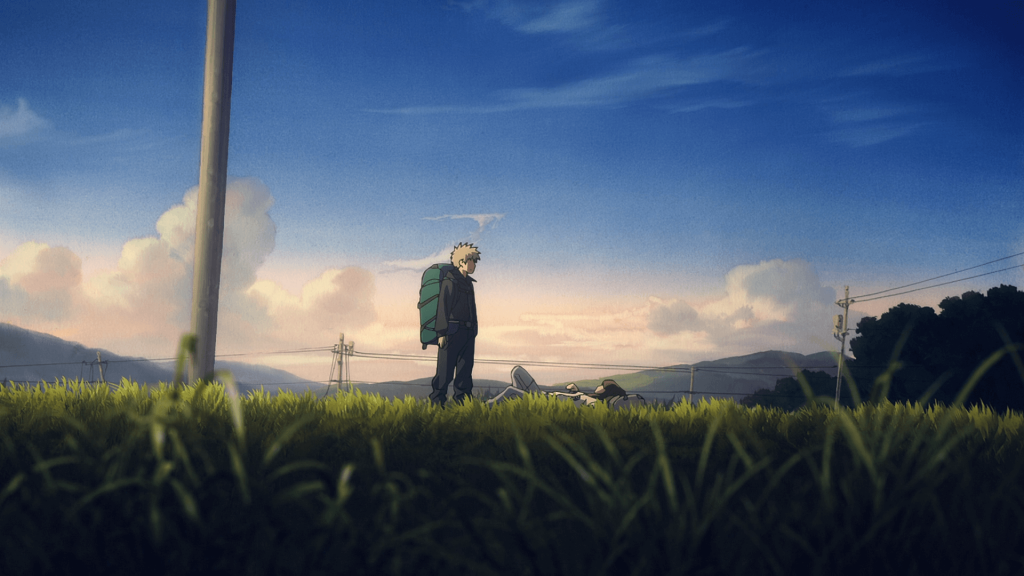
Tengoku Daimakyou is the latest case against stereotyping the output of individual anime studios. The unusual story content aside, as recently as a decade ago, a series helmed by a first-time director in Hirotaka Mori, surrounded by a massive host of eccentric freelancers, would have been unheard of for the storied Production I.G. This is the same studio that got burned (or rather, burned themselves) by firing Ikuo Geso, another first-time, young director, just before the airing of Majoujin Guru Guru in 2017. Fast forward a few years, and Kazuto Arai is given a debut of his own, this time on Fate/Grand Order: Shinsei Entaku Ryouiki Camelot. Together, with a band of idiosyncratic trailblazers common to such inventive shows as Mob Psycho 100, they transformed the action set pieces at the end of the film into their own charismatic animation showcases. The faith placed in Arai panned out better than that in Geso, and it would seem Mori has landed in the former camp himself, but regardless, this is a studio that has historically aired on the side of tradition and conservatism. One which we’ve seen time and again manifest itself in the form of leaning on veterans to vanguard their high-tier productions while also keeping their animation base as close to home as possible. Thus, Tengoku Daimaykou stands on the precipice of an erratic shift in Production I.G.’s practices that can only be emblematic of changing times throughout the industry. The director of Kaiju No. 8 has yet to be announced as of writing, but based on this trend, expect this too to be someone trying their hand for the first time.
That is not to say these directors have absolutely no track record to speak of, though. Hirotaka Mori has close to a decade of experience, bouncing back and forth between A1 Pictures and Production I.G., scattering a host of quality episodes between the two. His most ambitious episode is surely the ninth episode of Fate/Apocrypha, where he would have initiated his connection to some of the young talent (Itsuki Tsuchigami, Kazuto Arai) supporting Tengoku Daimakyou. Therefore, it was only a matter of time before Mori would get his chance—if anything, we could say he was overdue—but very few ever get the opportunity to lead projects on a scale such as this, and fewer still for their debut work.
So, it does bear asking: how and why was such an incredible team assembled? The animation producer for the show is Masashi Ohira, another relatively inexperienced product of Production I.G. who has only previously helmed the Jump SQ adaptation of Yuukoku no Moriarty, a sturdy production but nowhere near the star-studded, industry-wide event that Tengoku Daimakyou happens to be. The production desk, typically responsible for financial matters but sometimes with a hand in staffing decisions, is being run by Yusuke Tsuki, who is similarly assuming this role for the first time.
Clearly, these individuals have demonstrated skills that permit this opportunity, but it’s ultimately a reminder that tracking producer trends is, at best, predictive. The industry is comprised predominantly of freelancers and is in a constantly evolving state. With so many factors at play, the most important of which is the existence of a carte blanche Fate/Go movie at the same studio, this exercise is far from being an exact science. These freelancers are also liable to have certain tastes and preferences, which is to say that an interesting manga with Otomo-adjacent designs like Tengoku Daimakyou does not come along very often. The small amount that I’ve read establishes an intriguing mystery with some very clear foreshadowing, almost asking you to assemble the puzzle backwards. For what it’s worth, there’s also a perverse level of horny strung throughout Masakazu Ishiguro’s manga as well, though the anime has already shown signs of toning this down with more tasteful framing and some omitted dialogue.
It’s also arriving at an opportune time, with post-apocalyptic worlds running rather hot. As HBO’s latest mega-hit, The Last of Us, has shown, people are drawn to decay. There is something thrilling about being freed from societal shackles, but, at the same time, terrifying to realize the degree to which we’ve become dependent on them. Ishiguro has also devised a parallel reality that seems to be in complete contrast to the one Kiruko and Maru are currently exploring. As someone who has only read the first few chapters, it will be interesting to see how these two sides come together.
Thus far, I’ve mostly painted a picture of younger, inexperienced creatives and supporting staff tackling a mammoth project for the first time. And while that is the case on some fronts, there are three crucial departments where the veteran leadership is as dependable as it is responsible for the shows’ success: music, background art, and photography.
Since breaking into the industry under Masaaki Yuasa in 2014, Kensuke Ushio has been at the forefront of a number of major projects. His soundscapes are rather unique in the sense that they’re difficult to just drag and drop in the way that most anime handle their music. As Naoko Yamada has shown better than anyone else who has worked with him, Ushio’s music is like a language that exists in the periphery of everything that is happening on the screen. The sudden accents and less than standard rhythm in his tracks often require that the tempo of the board and direction be in sync. This is an easier task when film scoring, but most TV productions—Tengoku Daimakyou included—do not have that luxury. Thus, it will remain to be seen how Hirotaka Mori and the episode directors working under him utilize Ushio’s sounds. For the first episode, they managed to capture the same unsettling ease I felt reading the first chapters of the manga, so if that is any indication, the outlook is good.
With a post-apocalyptic setting, strong background art is a necessity. I would go so far as to say it’s arguably the most important aspect of the work. Fortunately, then, that Tengoku Daimakyou would land Yuji Kaneko of studio Aoshashin. His experience in this role has permitted a hyper-focused level of efficiency, allowing him to lend his style across many different concurrently produced anime while not compromising much at all in the way of quality. Kaneko is also adept at painting on both the analog and digital fronts, as Ousama Ranking recently demonstrated. With how advanced digital painting tools have become, it can often be difficult to distinguish between analog and digital painting, especially when the art director might be intentionally trying to obfuscate that line. However, the split story structure of Tengoku Daimakyou seems to have prompted Kaneko to take a very deliberate approach between the sterilized school setting inside the dome and the fantastical wilderness our protagonists are exploring outside.
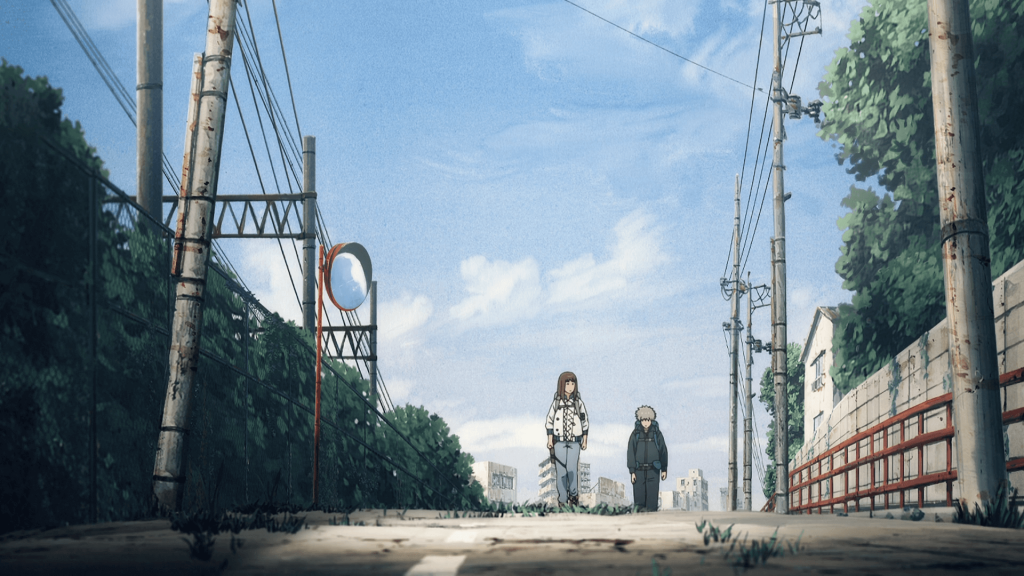
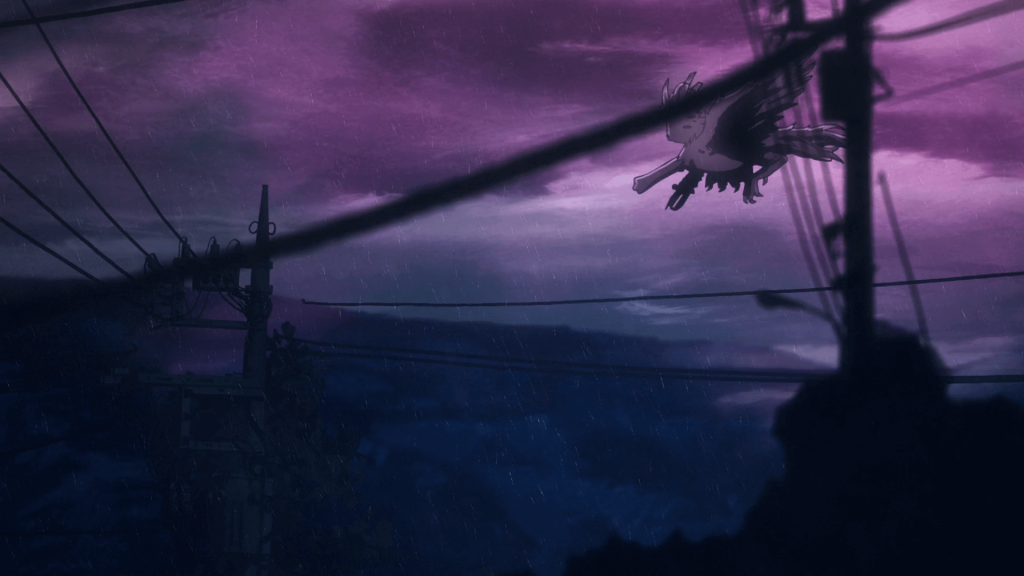
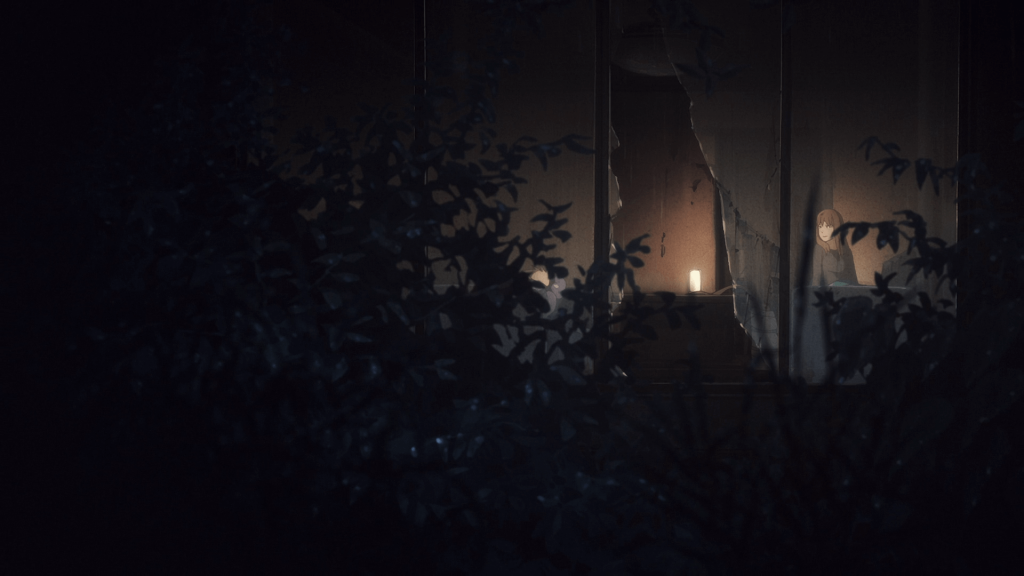
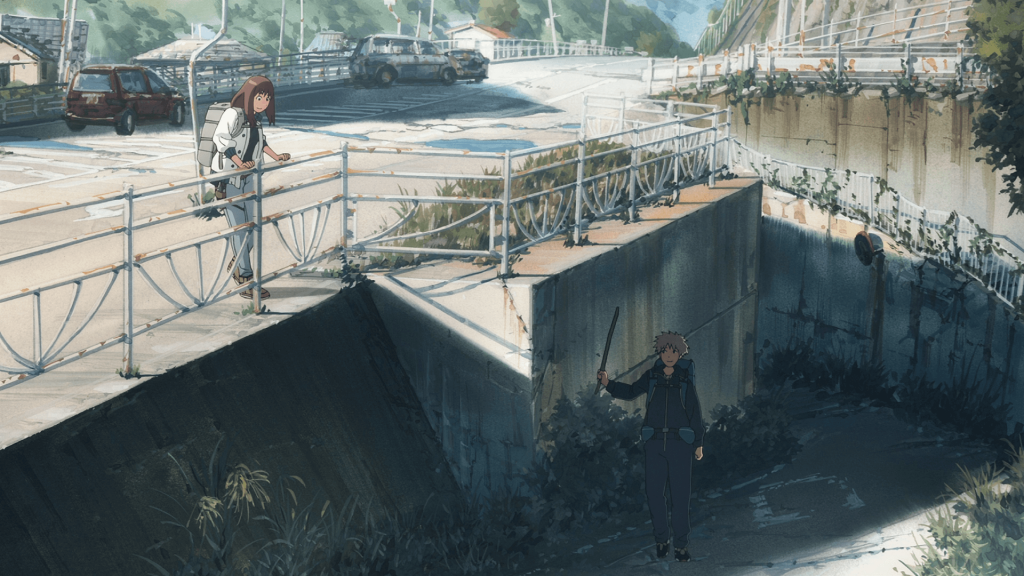
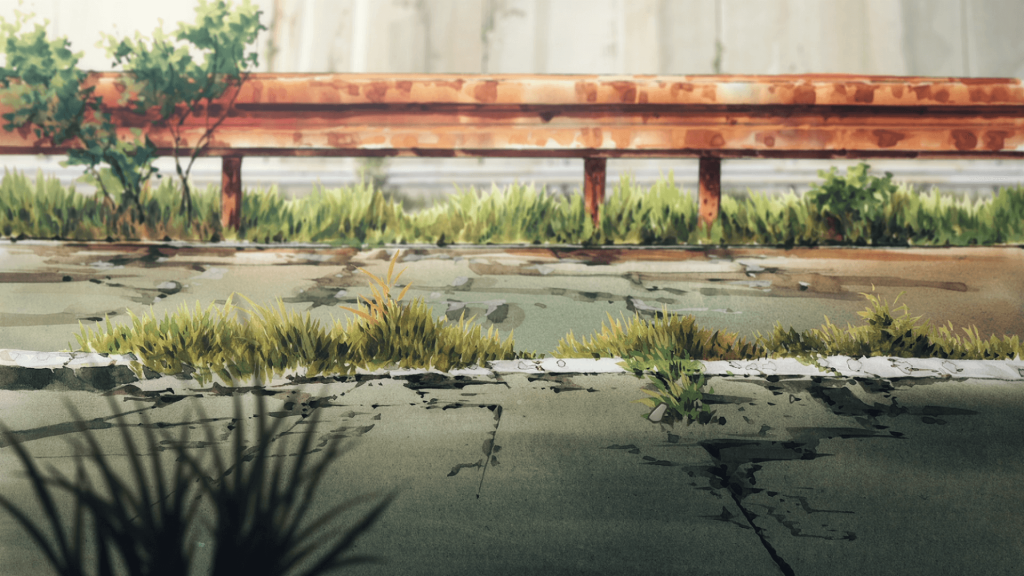

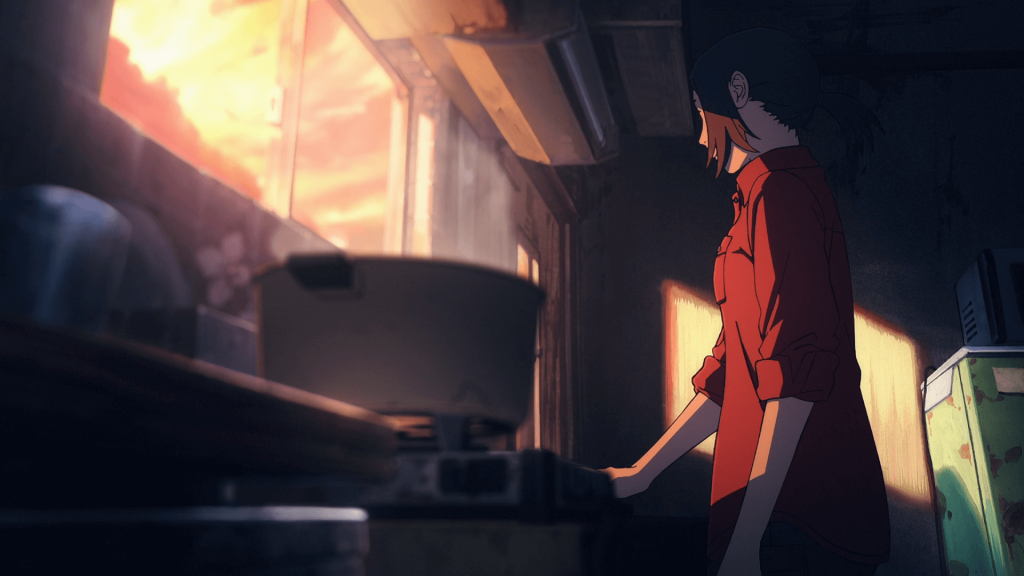

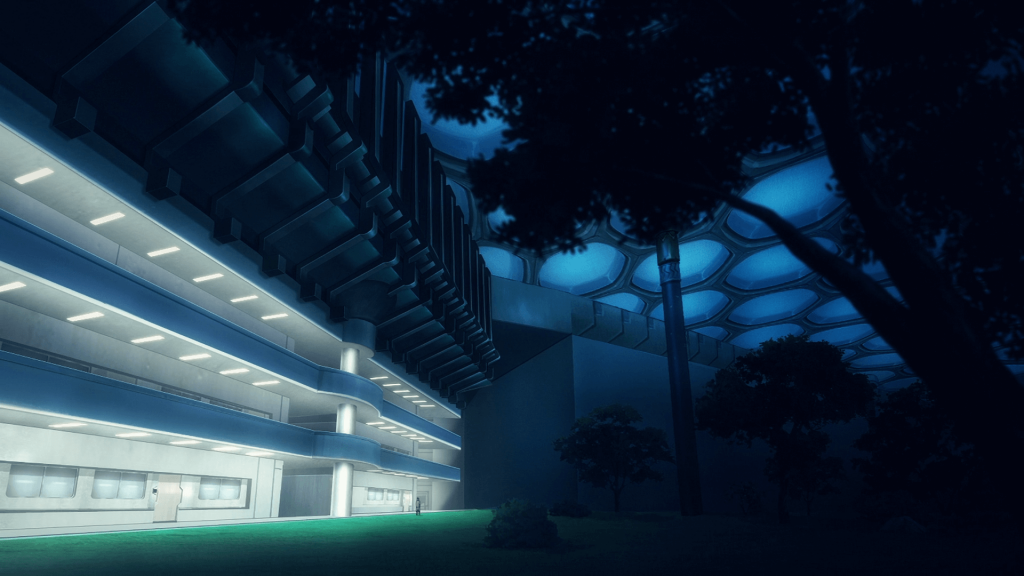
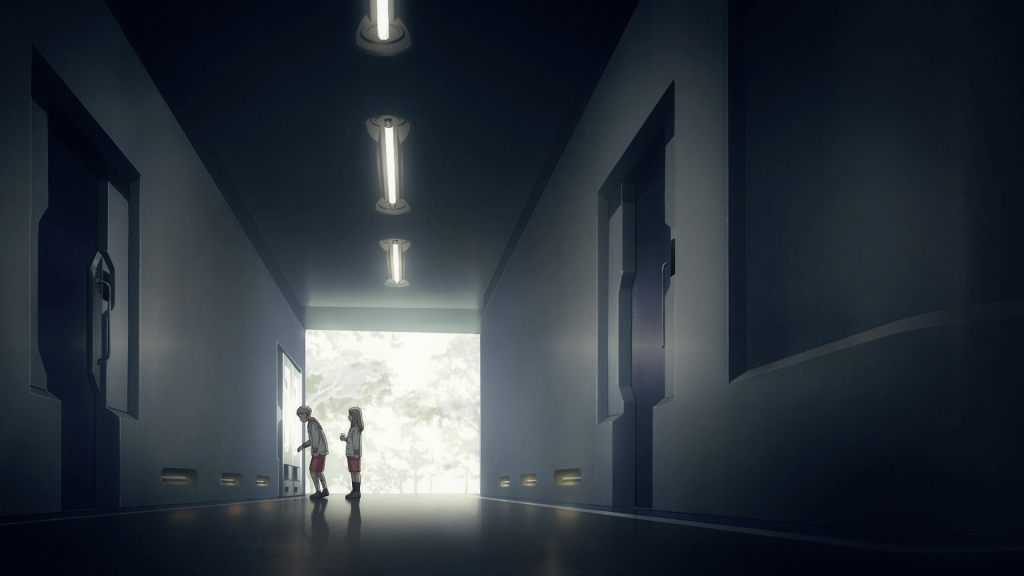
It’s worth noting that we’re not exactly seeing Yuji Kaneko’s background art in its rawest form with this show, since it’s impossible to separate it from the photography by Kentaro Waki. Rounding out the trio of established veterans, Waki has made a name for himself predominantly in mecha anime, where his aggressive style of filtering adds an immediately recognizable sheen to the work. Much like his idol, Yuichi Terao of Ufotable, Waki has photorealistic (though you could contend that term isn’t accurate for anime) tendencies, which he has constantly worked to adapt around the context of whichever job is laid out in front of him. This is easier said than done, of course, as he’s taken jobs across a wide spectrum of contexts. For those with a preference for more simple and less-invasive looks over their drawings, it would be fair to criticize some of the over-the-top post-processing Waki is liable to dish out. However, it’s this idea that makes Tengoku Daimakyou so interesting as a project because it’s by far Waki at his most conscious of the larger picture. You can feel his attention to detail down to the individual cut level. The selective grain and gradients that contribute to the matte finish characteristic of his work, to his lighting accents, and more—it all has a certain refinement that you simply do not see on television very often. An important factor in his output is the schedule, as his approach necessitates having the finished cuts in ample time ahead of the deadline since his process is so involved. Fortunately, Tengoku Daimakyou has done well on that front, being close to finished ahead of the broadcast, though that doesn’t mean there wasn’t crunch involved, as sometimes setting hard deadlines can force people to work harder to meet them. In any event, this is a fairly new and great look for Kentaro Waki, one that trades some of the bombastic flourishes for something more subtle in nature while still staying true to the iconic style he’s known for.
The last caveat of Tengoku Daimakyou’s elegant production to touch on here is the snowball effect. In essence, good artists want to work with other good artists. In securing a director like Hirotaka Mori, you also capture a certain group of individuals, like the aforementioned Itsuki Tsuchigami and Kazuto Arai, who, despite being invited directly from Fate/Go: Camelot instead, enjoy working with him, which is a boon in and of itself. These two artists have talented friends of their own, and through word of mouth, suddenly there are a host of eccentric artists willing to lend a hand to the work. We are even seeing the snowball effect occur within the same studio, as I.G.’s historically robust production lines breakdown with everybody in the vicinity wanting a piece. Hidehiko Sawada, for instance, has only worked at I.G. under producer Rui Kuroki and director Kazuto Nakazawa, yet he can be seen here alongside many others originally belonging to other teams. This phenomenon isn’t new, but especially recently it has become all the more apparent as the industry stagnates in producing new talents faster than old ones leave while still green-lighting the same number of anime. The middle ground is slowly slipping away, replaced by a feast-or-famine outcome where the production quality of a show is either mind-blowing or completely pedestrian. Fortunately for fans of Tengoku Daimakyou, it firmly falls into the former camp.
This short preview only serves to cover the main staff of the show. As we’ve already seen with the first episode, there are plenty of surprise guests willing to lend a transformative effort to the series. Thus making it worth covering on an episode-to-episode basis, so stay tuned for more!
If you enjoyed this post, please consider supporting on ko-fi: here
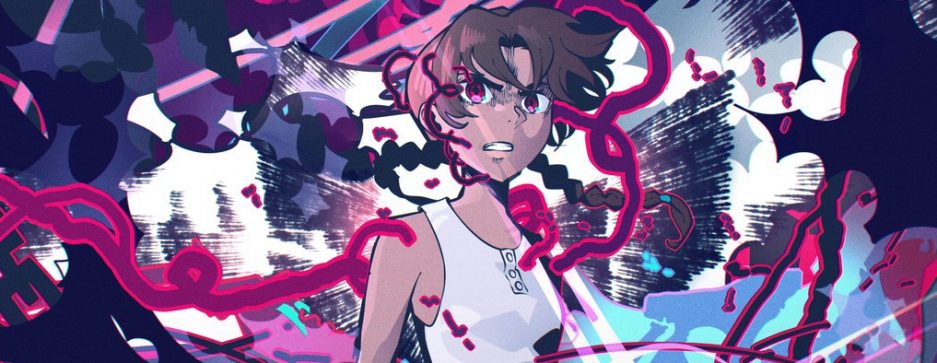
thank you for the article Geth-san, I’m curious about the production lines, is having multiple animation producers counted as multiple production lines or is it a bit more complicated? I’m hearing some younger companies like M-studio don’t have production lines, is this true? what’s the difference between them and a studio like Bones?
Hi there, that is the general idea but it is a bit more complicated than that since animation producers sometimes jump around.
Bones has 5 production lines for instance, labeled A through E based on the different studios. Yoshihiro Oyabu is known for being MHA’s aniP which has been at Studio C since season 2, however he also did aniP for Super Crooks recently which was at Studio B. So there is inevitably going to be some overlap but generally studios like Bones, A1/CLW, Prod I.G., Sunrise have very distinct production lines that you can track across decades of shows. The advantage of this is organization, mainly. When it is time to make the next show or sequel there is already a large pool of associated directors and animators who are familiar with the environment. The top brass, Masahiko Minami in this case, is also able to give his individual sub studio production staff a lot more freedom and control because there is structure in place allowing for the shows to be at a passable production level before they even start looking to recruit staff and fill gaps.
MAPPA intentionally does not have solidified production lines, Manabu Otsuka has outright stated as much. It’s a monolithic entity instead, all the committee negotiations and main staff appointments are decided by Otsuka and Makoto Kimura alone. They essentially say “show X is going to get all our priority, while shows Y and Z wont.” Thus, it historically has not mattered all that much who the aniP is for show X since they’re putting the entire studios resources towards X anyways. Meanwhile, shows Y and Z have to do whatever they can to simply meet the bare minimum, and fill gaps in the production which is where you end up seeing so much Twitter help as the production assistants scramble to recruit warm bodies, regardless of their drawing ability.
This monolithic approach could have its advantages if they were a small studio and highly selective in their projects, however they’re not, so you end up getting shows that are completely disorganized messes (risking the health of the staff) with anyone and everybody in the vicinity pitching in in a small way just to get it done.
“Manabu Otsuka has outright stated as much.” Do you have a source for this?
My apologies, it was Shuhei Yabuta and Yuchiro Hayashi who said the studio has no production lines (they try to frame it as a positive thing in a kind of hilarious way in this staff commentary). This strengthens my point if anything since it speaks towards how their top-end staff feel about the studio, which is also to say nothing of Tomohiro Kishi’s comment just above that where he had to be dragged from who knows where to provide for AoT:
https://cdn.discordapp.com/attachments/779038091151147018/782618391016898610/unknown.png
I truly wonder how the production system was for Madhouse back when they had the best directors in the industry. I imagine it was monolithical like MAPPA currently.
Hi Geth, how do we know that the show’s prodcution is close to being done?
Hi there, 95% of the time that I dont include a source for a claim its because it was verified through private channels so unfortunately it’s just on my credibility/word. Although, you can find many staff tweets that imply their work was done a while ago
Geth, I’d like to hear what you know about Production I.G. currently, if you don’t mind sharing.